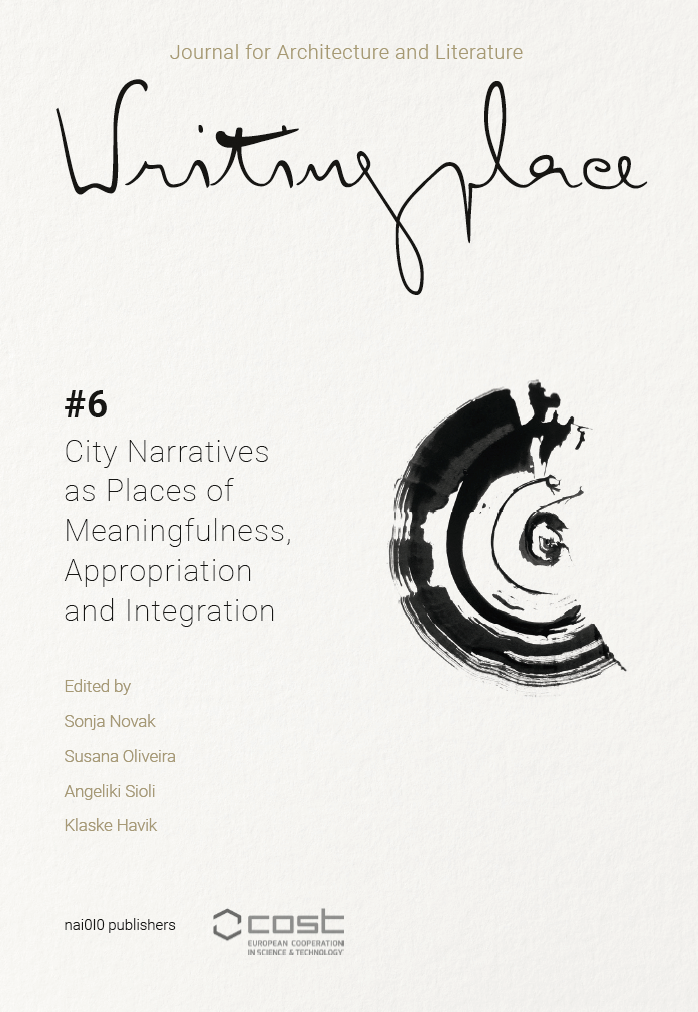The Concept of Appropriation in Collective Housing Design
Understanding Dwelling as a Poetic Practice
DOI:
https://doi.org/10.7480/writingplace.6.6358Abstract
The article aims to contribute to the theoretical debate on collective housing design by focusing on dwelling as a poetic practice. More precisely, it explores the methodological potential of the concept of appropriation that fosters the understanding of dwelling as the creative practice of human self-realization through space. It does so by interpreting selected writings of Henri Lefebvre and bringing forward exemplary housing projects. The theoretical review concludes with several principles of housing design that underline the importance of the continuity, overlapping and ‘softness’ of dwelling space. Moreover, the article conceptualizes appropriation as an analytical tool for reading the transformation of existing space made by residents. Appropriation narratives, in this way, enable housing design to understand and consider the spatial characteristics that contribute to meaningful emotional connections between space and people on different scales.
References
Henri Lefebvre, ‘Preface to the Study of the Habitat of the “Pavillon”’, in: Stuart Elden, Elizabeth Lebas and Eleonore Kofman (eds.), Henri Lefebvre: Key Writings (New York, 2003), 130-133.
Fumihiko Maki, Investigations in Collective Form (Saint Louis, MO, 1964), 6.
Lefebvre was a cofounder of the Institute in 1963 and its president until 1973. Its contemporary successor is Le Centre de recherche sur l’habitat (CRH), currently located at the École Nationale Supérieure d’Architecture de Paris-Val de Seine.
Le Centre de Recherche sur l’Habitat (CRH), crh.archi.fr/spip.php?page=inc-english&lang=en&id_article=13.
Łukasz Stanek, Henry Lefebvre on Space: Architecture, Urban Research and the Production of Theory (Minneapolis/London: University of Minnesota Press, 2011).
Henri Lefebvre, ‘Utopie expérimentale: pour un nouvel urbanisme’, Revue française de sociologie 2-3 (1961), 191-198.
Christopher Alexander, ‘A City Is Not a Tree’, in: Michael W. Mehaffy (ed.), A City Is Not a Tree: 50th Anniversary Edition (White Salmon, WA: Sustasis Press, 2016 [1965]), 10.
Maki, Investigations, op. cit. (note 2), 29.
Henri Lefebvre, Urban Revolution, translated by Robert Bononno (Minneapolis: University of Minnesota Press, 2003 [1970]), 81.
Lefebvre, ‘Preface’, op. cit. (note 1), 123.
Kuch Upendra Patel, Realizing Henri Lefebvre: Ideas of Social Space in Lucien Kroll’s La Mémé, Brussels 1969-1972 and Bernard Tchumi’s Parc De La Villette, Paris 1982-1987 (PhD dissertation, University of Michigan, 2016), available online at: deepblue.lib.umich.edu › handle › kshpatel_1.
Ricardo Bofill web page: ricardobofill.com/projects/city-in-the-space/.
Dušan Grabrijan and Juraj Neidhardt, Arhitektura Bosne i put u savremeno (Ljubljana: Državna založba Slovenije, NR Bosna i Hercegovina, NR Slovenija, 1957), 150.
Patel, Realizing Henri Lefebvre, op. cit. (note 17).
David O’Briena and Sandra Carrasco, ‘Contested Incrementalism: Elemental’s Quinta Monroy Settlement Fifteen Years On’, Frontiers of Architectural Research 10 (2021), 263-273.
Downloads
Published
How to Cite
Issue
Section
License
Copyright (c) 2022 Nevena Novaković

This work is licensed under a Creative Commons Attribution 4.0 International License.



